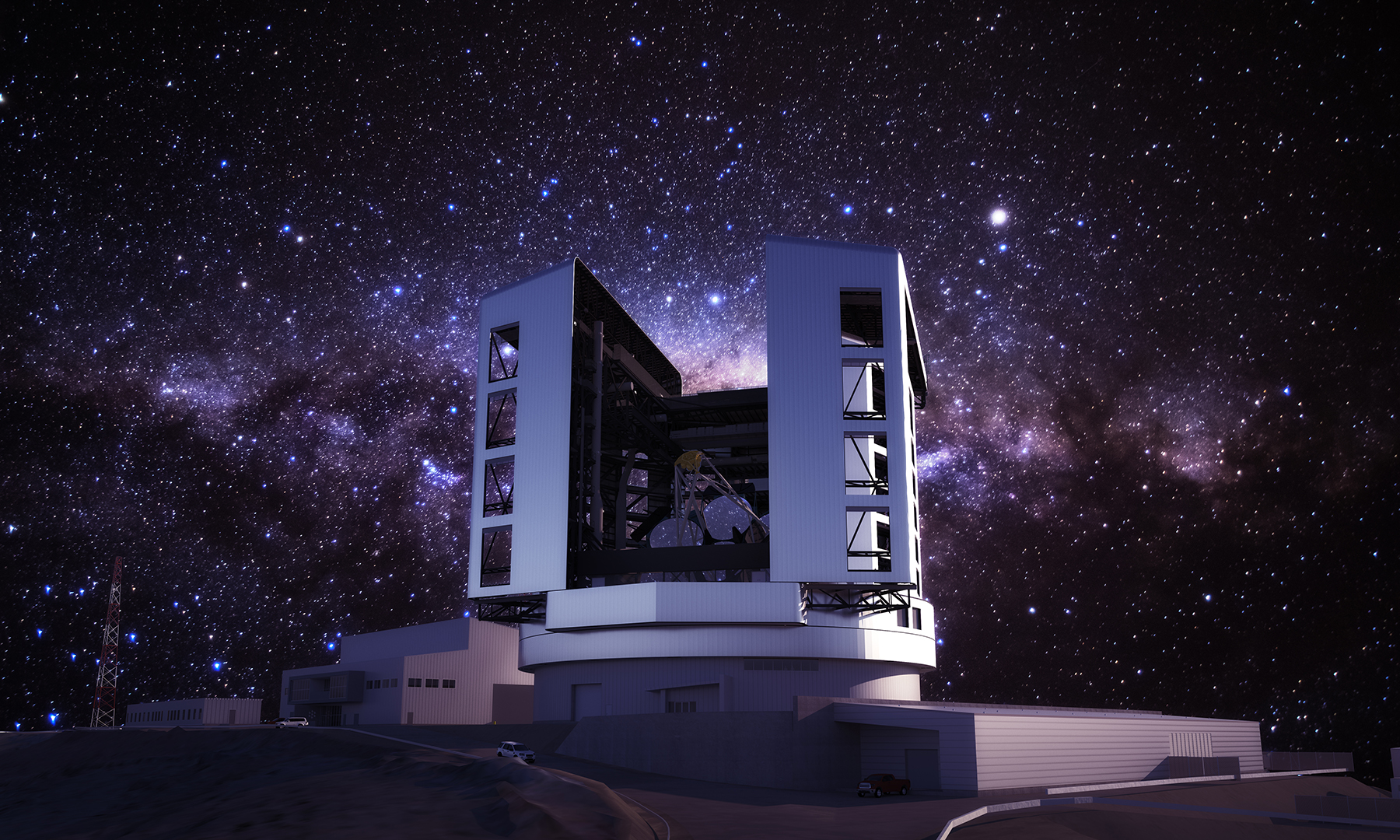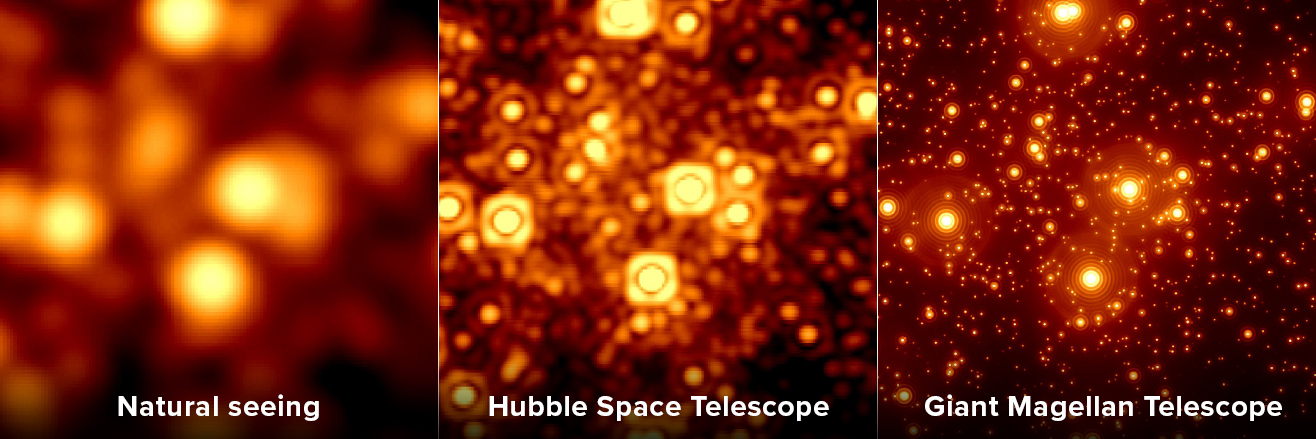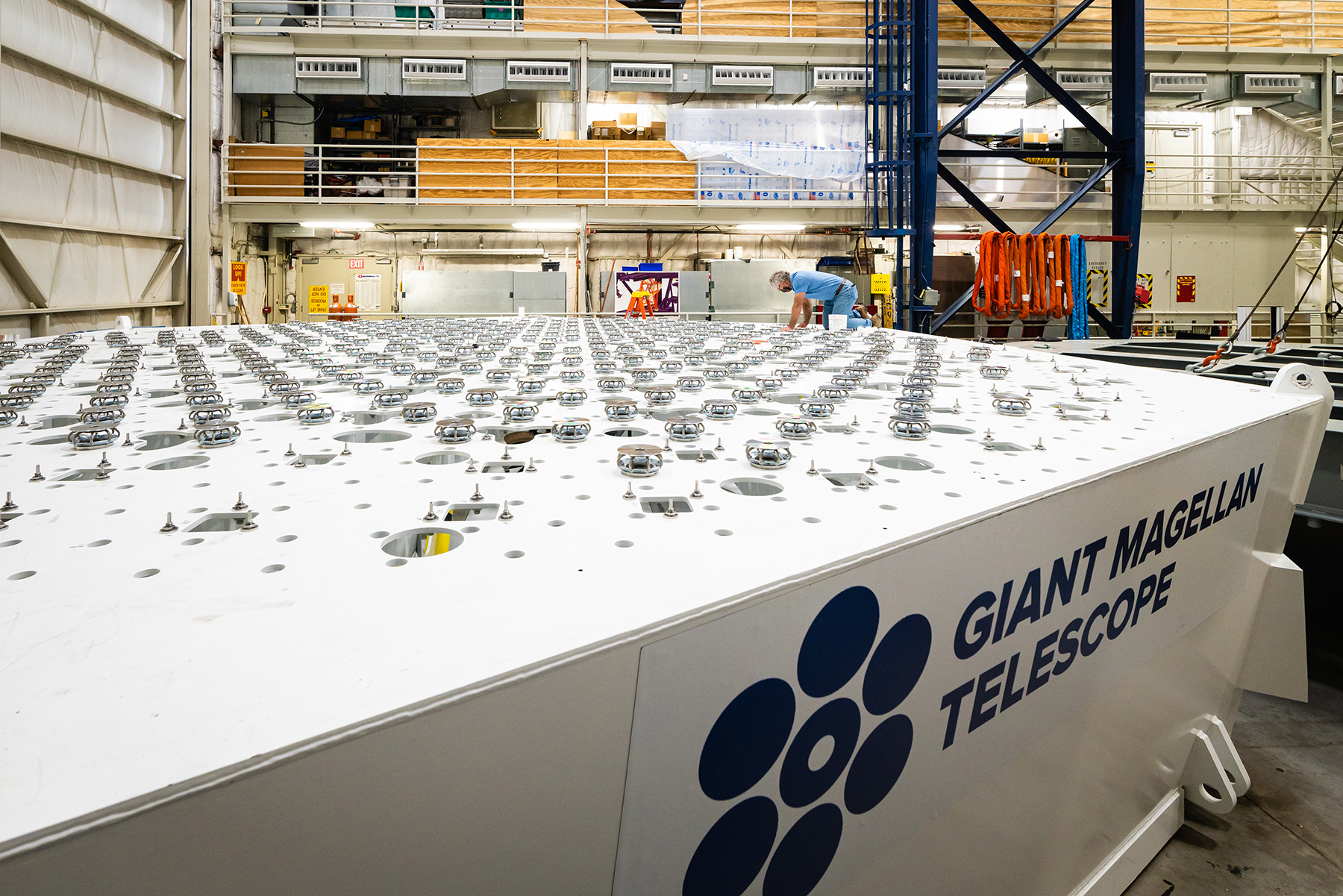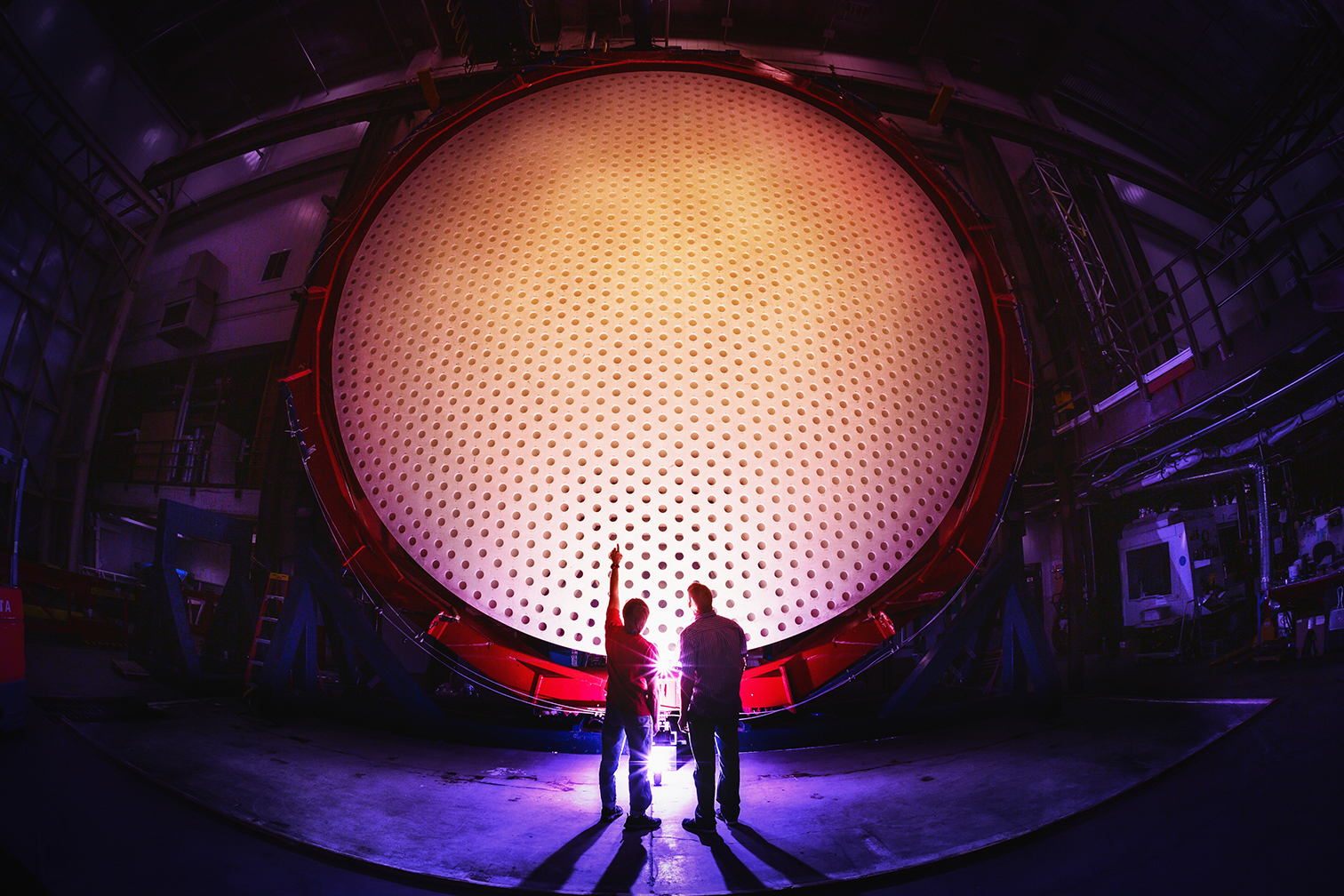Image List
-

The Giant Magellan Telescope is currently being constructed at Las Campanas Observatory in Chile. With of seven of the world’s largest mirrors ever constructed, each at 8.4 meters in diameter, the GMT will provide ten times better resolution than the Hubble Space Telescope.
GMTO Corporation/M3 Engineering -

A gray steel structure that simulates one of the massive 16.5-ton Giant Magellan Telescope primary mirror segments is installed onto a test cell. The GMT test cell and mirror simulator will be used to test the support structure and actuators that hold the massive telescope in place, including the software that controls the precise movements of the mirrors. Taken at the Richard F. Caris Mirror Lab at the University of Arizona.
Steve West, Richard F. Caris Mirror Lab at the University of Arizona -

This image quality comparison is of a small patch of sky as observed from the ground through the atmosphere with the naked eye (left), as the Hubble Space Telescope would observe it (center), and a simulation of the Giant Magellan Telescope using adaptive optics to achieve diffraction limited seeing from the ground (right). When online, the GMT will achieve ten times better resolution than the Hubble Space Telescope.
GMTO Corporation -

The Giant Magellan Telescope test cell is being outfitted with mirror supports and actuators in the Richard F. Caris Mirror Lab at the University of Arizona in Tucson. Kurt Kenagy inspects the static support hardware prior to attaching the mirror simulator (not shown).
Steve West, Richard F. Caris Mirror Lab at the University of Arizona -

The Giant Magellan Telescope primary mirror segment 5 sits vertically at the Richard F. Caris Mirror Lab at the University of Arizona. Each of the seven mirror segments of the Giant Magellan Telescope is 8.4 meters in diameter, together forming a single optical surface of 24.5 meters with a total collecting area of 368 square meters.
Damien Jemison, GMTO Corporation